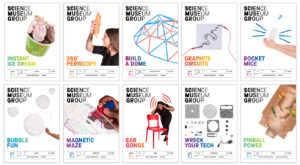Over the years we have taken steps to make sure families and schools can be actively included in our experiences. Having our hands-on activities available online has helped to ensure families and schools can engage with, and access, our content wherever they may be.
In this post I share the reasons behind our decision to make videos of the activities, as well as links to the three we currently have out. To start with, here is one of the videos:
Our Learning Resources website brings together resources from our museums, including activities, games and videos. Our hands-on activities are quick projects that are easy to make. They use everyday objects that people might have around their homes, helping to dispel the myth that you need special scientific equipment, or a prior knowledge of science and maths, to do activities relating to STEM (science, technology, engineering and maths).
Why did we decide to develop videos of some of our resources?
Making video versions of our hands-on activities was a big ambition for the Learning team, even before I joined. Some activities such as Rocket Mice and Instant Ice Cream have been among our most popular pages, and we felt that having videos showing these activities being made could really enhance our offer and potentially reach new audiences as well.
All of our hands-on activities were developed using the science capital research and our engagement reflection points to make them as accessible as possible. We realised, however, that not everyone finds this format ideal. The downloadable PDFs of the resources work great for lots of schools and families, but, they don’t always work for those less confident with science/ with lower science capital, or for those with English as a second language.

Not wanting anyone to miss out, we asked ourselves, how can we make our activities even more accessible for our audiences?
We recognised the value in actually seeing the activity being created, rather than just reading instructions and seeing how-to pictures. Videos mean people can make along and feel more included, increasing their confidence in doing STEM activities. We also knew that videos would be great for sharing on different social media platforms across the web, giving us the potential to reach an even broader group of people.
We currently have three videos out, with more coming:
It’s been really lovely to see such a positive response from families who have given the activities a go during lockdown. I hope that it’s inspired a little bit of curiosity and discussion about the relevance of maths and science in our everyday lives, and how down to earth science really is.
In my second post, Translating our hands-on activities to video, I share more about the development process.